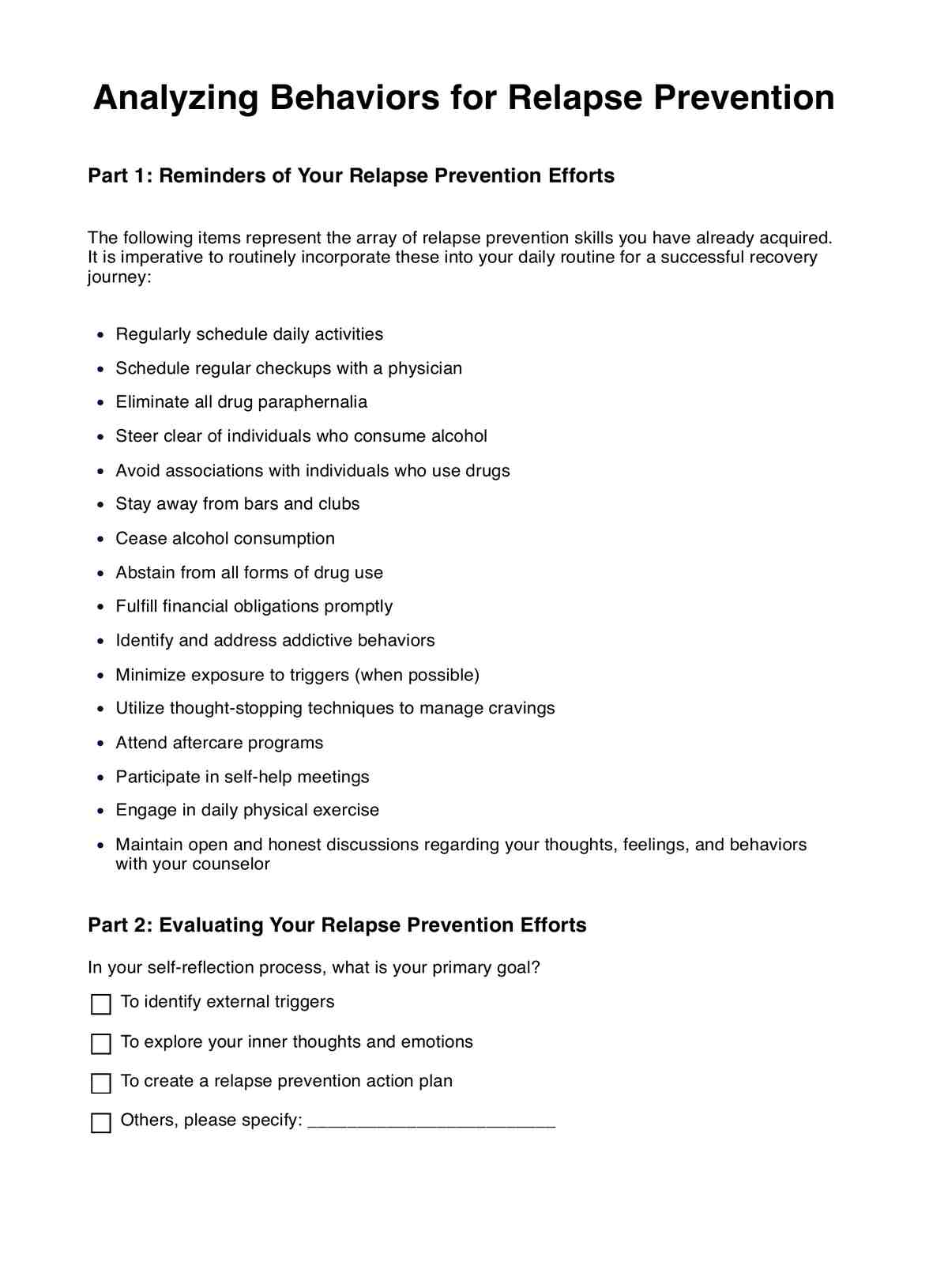Typically, this process spans between 30 minutes to an hour. The exact duration hinges on the depth of self-reflection and analysis undertaken by the individual.

Analyzing Behaviors for Relapse Prevention CBT Worksheet
Learn how Analyzing Behaviors for Relapse Prevention CBT Worksheet aids in substance abuse treatment. Download your free PDF now!
Analyzing Behaviors for Relapse Prevention CBT Worksheet Template
Commonly asked questions
It helps them clarify their specific relapse risks, enabling them to develop targeted strategies to safeguard their sobriety and navigate their journey toward recovery with greater resilience.
By integrating this worksheet into these contexts, individuals and groups can collaboratively address and manage relapse risks. It ensures that sobriety remains a central focus and equips participants with valuable insights and strategies to fortify their commitment to recovery.
EHR and practice management software
Get started for free
*No credit card required
Free
$0/usd
Unlimited clients
Telehealth
1GB of storage
Client portal text
Automated billing and online payments











